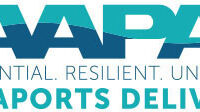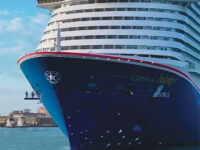COVID-19’s Infrastructure Impacts
Sound Investments, Innovative Solutions Keep Many Projects on Track, Though Most Cruise-Related Ones Are on Pause

By Sandy Smith
While the COVID-19 impact on global trade created plenty of economic uncertainty, it did not necessarily stop ongoing port infrastructure projects. Though it might have made some of the challenges of construction a little steeper.
“There is capital out there for projects,” said Joshua Hurwitz, senior commercial analyst for global infrastructure advisory firm Moffatt & Nichol. “They’re looking for good projects that have sound investment justification. This continues despite the global pandemic.”
The cruise industry was undoubtedly one of the hardest hit, particularly as outbreaks of COVID-19 on vessels dominated early news headlines. Revenues for the industry were expected to fall in half in 2020. In mid-July, the Centers for Disease Control and Prevention extended a no-sail period from U.S. ports until mid-September.
For this particular segment, the impact on port projects was pronounced, Hurwitz said. “There were a number of cruise terminal projects and financings that were about to be launched based on a long history of robust growth in demand. Then, of course, that just shut down completely. It was an abrupt transition in what was historically one of the fastest-growing travel sectors.”
The trickledown, he said, was an impact on cruise-oriented port infrastructure projects.
With port projects more broadly, or those with cargo terminals, modernization and consolidation drove continuation of projects without much of a pandemic-related impact. “The ones that had been started already continued,” said Ashebir Jacob, senior port engineer for Moffatt & Nichol. “The ones that had not yet started hit a pause.”
Ongoing port projects – whether long planned or not – continued on, despite the upheaval.
When Innovation Becomes a Necessity
Pandemic or no, when a fire took out the Charleston Ice Plant in late December, delaying a rebuild was not an option for the Oregon International Port of Coos Bay. A fire gutted the facility, which impacted the commercial fishing in the area; fisheries depend on the flake ice to keep their catch cold until it reaches market.
“Access to commercial grade flake ice is critical to certain West Coast fisheries, including whiting, shrimp and squid,” said Margaret Barber, director of external affairs for the port. “The Charleston Marina serves as the third-largest commercial fishing hub in the state of Oregon. In 2019, over 18.6 million pounds of fish and shellfish were landed according to the Oregon Department of Fish and Wildlife.”
While the fire damage was catastrophic, the port opted to build back better. Wooden piers were replaced by steel, and the port added “significant ice making and storage capacity at the new facility,” Barber said. Storage capacity increased from 115 to 158 tons and production from two to five tons per hour. “The added production will improve service delivery time in the high seasons, allowing fleets to operate more efficiently and avoid delay times.”




